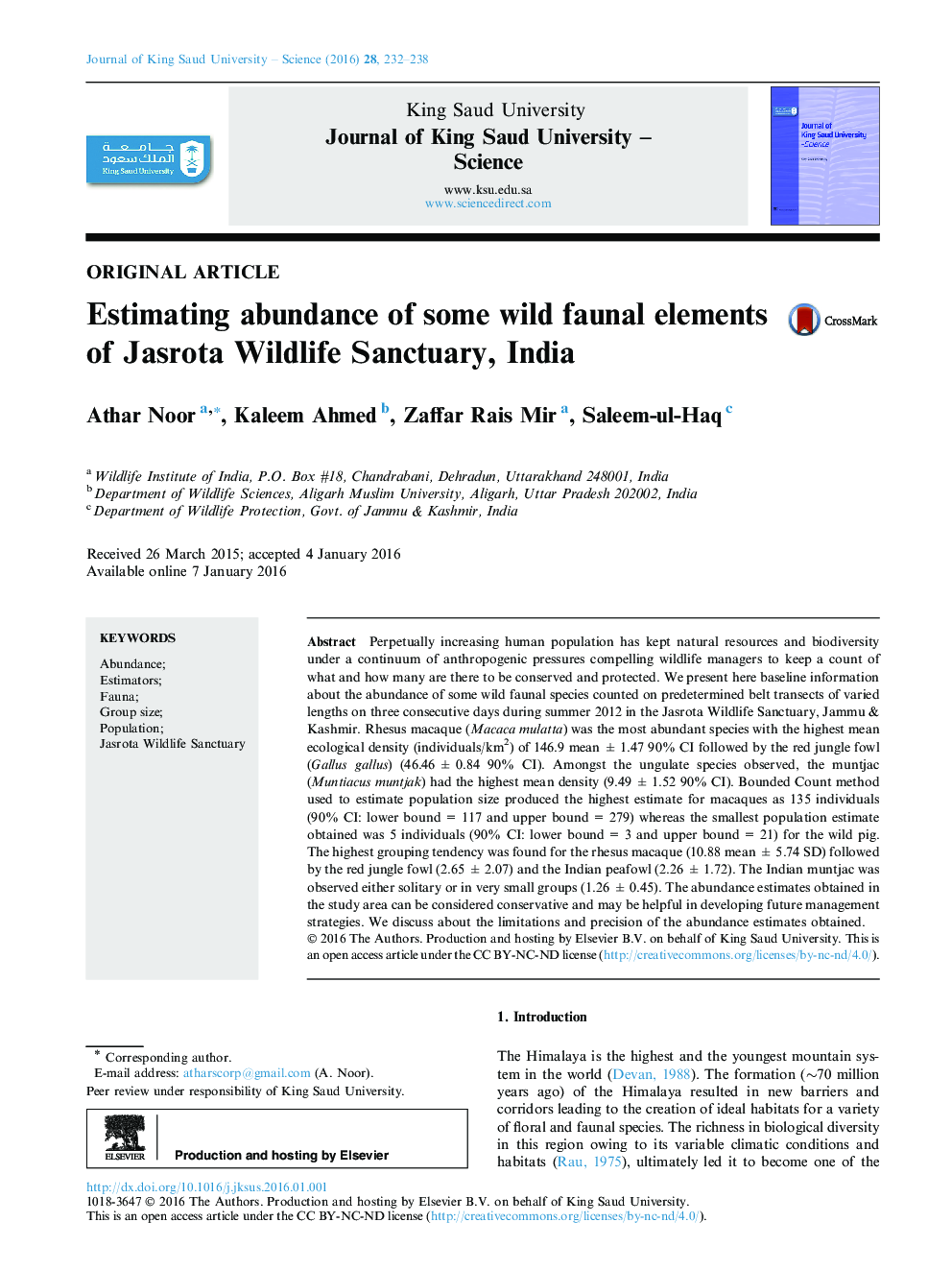| کد مقاله | کد نشریه | سال انتشار | مقاله انگلیسی | نسخه تمام متن |
|---|---|---|---|---|
| 827285 | 1369780 | 2016 | 7 صفحه PDF | دانلود رایگان |
Perpetually increasing human population has kept natural resources and biodiversity under a continuum of anthropogenic pressures compelling wildlife managers to keep a count of what and how many are there to be conserved and protected. We present here baseline information about the abundance of some wild faunal species counted on predetermined belt transects of varied lengths on three consecutive days during summer 2012 in the Jasrota Wildlife Sanctuary, Jammu & Kashmir. Rhesus macaque (Macaca mulatta) was the most abundant species with the highest mean ecological density (individuals/km2) of 146.9 mean ± 1.47 90% CI followed by the red jungle fowl (Gallus gallus) (46.46 ± 0.84 90% CI). Amongst the ungulate species observed, the muntjac (Muntiacus muntjak) had the highest mean density (9.49 ± 1.52 90% CI). Bounded Count method used to estimate population size produced the highest estimate for macaques as 135 individuals (90% CI: lower bound = 117 and upper bound = 279) whereas the smallest population estimate obtained was 5 individuals (90% CI: lower bound = 3 and upper bound = 21) for the wild pig. The highest grouping tendency was found for the rhesus macaque (10.88 mean ± 5.74 SD) followed by the red jungle fowl (2.65 ± 2.07) and the Indian peafowl (2.26 ± 1.72). The Indian muntjac was observed either solitary or in very small groups (1.26 ± 0.45). The abundance estimates obtained in the study area can be considered conservative and may be helpful in developing future management strategies. We discuss about the limitations and precision of the abundance estimates obtained.
Journal: Journal of King Saud University - Science - Volume 28, Issue 3, July 2016, Pages 232–238
